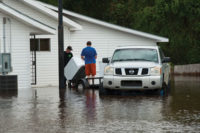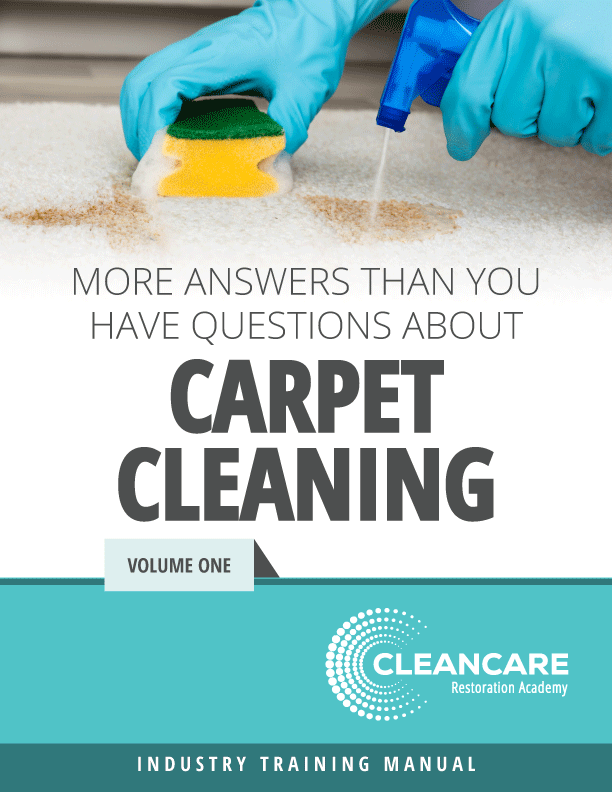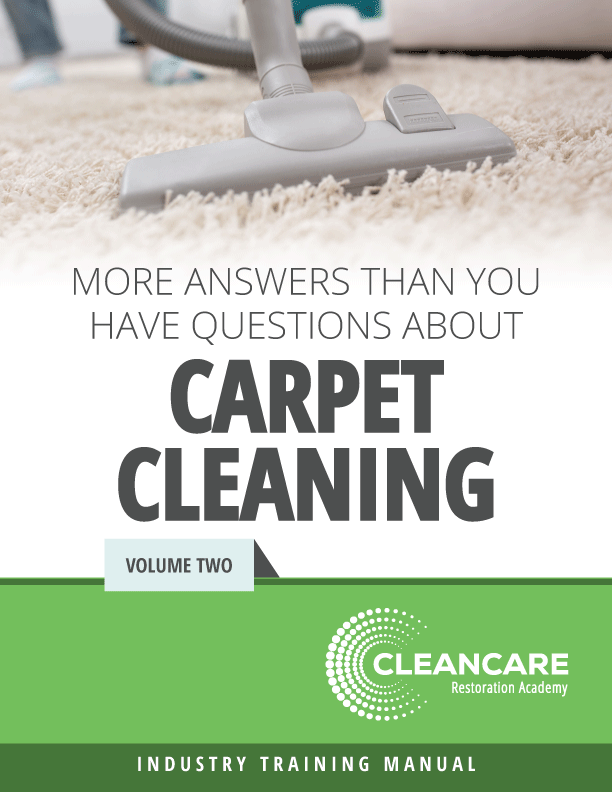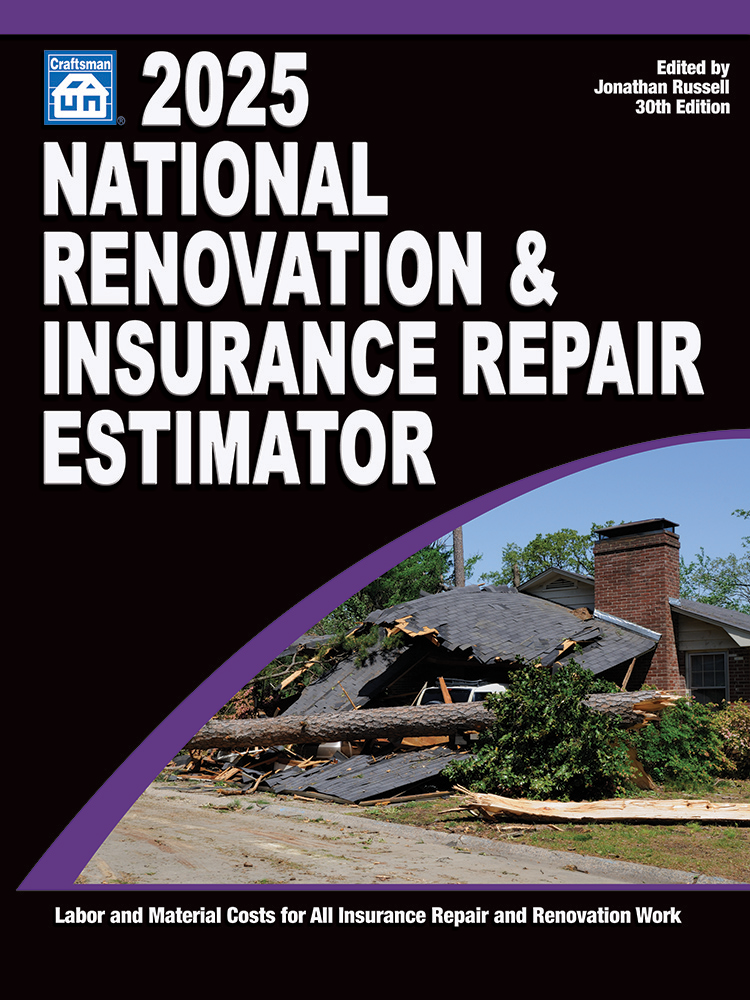Are You Feeling Lucky?

Knowing what your high-risk operations are will go a long way toward sustaining your business over time. Every day, the owners of restoration firms take on risks in the hopes of making a profit. If everything works out as planned, high-risk activities should earn a high rate of profit; otherwise, why take on the risk?
Owners also work to manage the risks in their business. In general it is a good idea for owners to manage the higher-risk activities closer than activities that are relatively low risk. Where owners get into trouble is when the perceived risk is considered lower (nothing to be concerned about) than the actual risk (a company buster).
Test your knowledge on relative risk in the restoration business. Rank the following from 1-5, with “1” being the most risky business activity:
- Asbestos Abatement
- Mold Abatement
- Lead Abatement
- Drying Category 3 Water
- Hiring a Plumber Subcontractor
Subcontracting plumbing work on a restoration job is actually more risky than being an asbestos abatement contractor. Surprised? Everyone usually is, which is why most firms do not do a good job in managing risk effectively; most owners are focused on the wrong things. They do not look at the overall risk picture, including the effects of insurance to mitigate the risk.
Let me illustrate a point. How could drying Category 3 water be more risky than being a mold remediator? There is a double whammy when there is a high chance of loss and there is no insurance coverage for it. The perfect case in point is Category 3 water work compared to mold remediation work. Everybody just seems to know that performing mold remediation work would be high risk, and some firms avoided it all together.
Everybody also seems to understand that a mold contractor needs Contractors Pollution Liability insurance and, in practice, almost all mold remediators today have CPL coverage in place.
Working with drying Category 3 or black water turns out to be more risky in actual insurance loss experience than being a mold remediator. Here is why: mold is a living thing. When conditions are right it starts to grow like the corn in a newly planted field. The corn in the field will all grow at the same time if it is going to grow at all. By the time a mold remediator gets to the mold job, the mold has already grown and caused most of the damage it is going to cause, and the occupants have left the premises.
In that situation the remediator really has to mess up to make things worse and cause further damages. In reality, just about anything a qualified mold remediator does will make things better at the job site. Therefore it is actually relatively rare for a mold remediator to be sued for causing damages to people or property on a mold job.

Category 3 water work has the opposite overall risk picture. In contrast to mold jobs, the owners of property that call in the drying contractor expect good things to happen as a result of the drying firm being there. A bad drying job can actually make things at the property worse, including not preventing mold from growing. We actually get more mold-related insurance claims on drying jobs than we do from mold remediation jobs. That is likely because there are a lot more drying jobs than mold jobs.
But mold claims are only a small part of the risk picture for drying contractors. The real reason Category 3 water work is so risky is that General Liability insurance policies today usually exclude any loss at the job site where there is Category 3 water involved. Yes, you read that right: being at the job site is not insured if you are there to work with water contaminated with bacteria. By definition, Category 3 water is Category 3 water because of the bacteria in it. Some forms of Category 2 water also is contaminated with bacteria.
Apparently by accident, when the insurance companies decided to eliminate all the insurance related to mold losses, most of them slipped in the word bacteria right after the word fungus (which includes molds). As a result, Category 3 water work ends up not being insured by the General Liability insurance policy of the firm. Being on the job site without liability insurance, where the client expects a good outcome from the work performed, creates a high-risk situation.
For the readers who are having a hard time believing this insurance coverage analysis, dust off your General Liability insurance policy, go to the back section of the policy to where the endorsements are and read the Fungus/Bacteria exclusion: “This insurance does not apply to…” Then look at the S500 for a definition of Category 3 water. As I read the most common versions of the exclusion, there is no liability insurance on a Category 3 water loss.

Only the 100 toilets installed on the second floor leaked at the wax o-ring seal the first floor was fine. The repair costs included evacuating the building for months as the joists were sand blasted and the drywall was replaced. In a second loss involving a plumber on a drying job the restoration contractor brought in a plumber to tighten the drain on a bathtub. To access the leaking pipe the plumber used a saws-all to cut an access whole in the ceiling below the tub.
The small amount of white dust from the saw contained asbestos. Since it was a drying job from the leaking pipe, the drying fans blew asbestos dust all around the home. That was a very high six-figure loss that would have busted the remediation firm if they did not have a CPL policy in place.
Where was the subcontractors insurance on both these losses? It turns out plumbers are basically uninsured for a big part of what they do for a living, which makes them super-high-risk to hire as a subcontractor. Plumbers have the same Fungus/Bacteria exclusions that you do on your General Liability insurance policies. Like the General Liability insurance policies sold to restoration contractors, plumbers also have exclusions pollution, lead- and asbestos-related losses.
However, the impacts of these new exclusions on the liability insurance policies of a plumber are even more intense. Most plumbers do not purchase contractors pollution liability insurance although it has been available to them of many rears. The result is most plumbing firms are fundamentally not insured for a big part of their work today. That fact makes them unusually risky as subcontractors.
Anyone who has passed an IICRC S500-based professional water and drying remediation course knows that all water in a drain is considered Category 3 water. The S520 mold course teaches that there will be mold growth on drywall within 48 hours if there is too much humidity.
To illustrate the impact of the liability insurance exclusions on a plumber it helps to work through a hypothetical question. What does a plumber’s work do to cause damage? It leaks, that is basically all it can do. A plumber may have a water heater blow up now and then, or burn down a house with a soldering torch, but basically bad plumbing leaks and causes property damage to the building. If mold grows there can be losses for bodily injury.
If there is a gusher leak from a supply line that can be identified and dried before mold grows the plumber would have GL coverage for the damages the leak caused. However, if the leak is from a drain the Category 3 water exclusion kicks in immediately eliminating all a insurance coverage on the loss. If there is a slow supply line leak not found within 48 hours and a speck of any type of mold starts growing the entire loss for the plumber is also excluded.
As a result, even if the restoration firm did a perfect job of asking subcontractors for insurance naming the restoration firm as an additional insured on the plumber’s liability insurance policy, the plumbers insurance will do little to protect the restoration firm. What happens in that situation is 100% the loss caused by the plumber ends up going onto the restoration firm’s Contractors Pollution Liability insurance policy.

Why is Category 3 water work ranked so high on a relative risk basis? A lot of water and drying work is performed by carpet cleaning firms who do not have a good quality CPL policy in place. The chances of incurring a loss on one of these jobs is high even compared to mold/lead asbestos remediation. Without liability insurance at all on the job site, there is an unusually high chance of any loss on a Category 3 job being a company buster for everyone involved with the project.
The good news for all Category 3 water firms is that in practice, claims adjusters do not seem to connect the dots between Category 3 water and the Fungus/Bacteria exclusions in GL policies. As a result GL losses on Category 3 water losses are routinely paid today. The exception will be on a company buster loss, where more senior folks at the carriers are likely to connect the dots between the bacteria exclusion in the GL and the bacteria-contaminated water and deny the claim.
How can asbestos and lead contractors be lower risk than hiring plumber subcontractors? Both of these remediators specially trained are licensed. On asbestos and lead jobs, everybody is going into the project with their eyes wide open to the hazards of the materials and all the loss control procedures in place. Asbestos and lead remediators also have specialized insurance policies that fundamentally insure them for what they do for a living. Asbestos and lead have the potential to cause real harm, but the risk for a restoration firm is greater from inadvertently encountering these materials in a tear out project than from being in the abatement business or hiring an abatement contractor as a sub. A good quality CPL policy will insure the restoration firm for losses associated with lead and asbestos which serves as a backstop to the CPL carried by the abatement firms.
These risks illustrate that the actual risk can be far different than the perceived risk. In managing these common loss exposures in the restoration business owners need to look not only at the hazards involved with the work but also the insurance back stops that are in place if bad things happen at the job. All of these risks involve various forms of pollution exclusions on General Liability insurance policies. I put plumbers at the top of the list of high risk activities because their liability insurance is so poor due to the effects of fungus/mold/bacteria exclusions on their General Liability insurance and the fact that most plumbers do not purchase CPL insurance.
Category 3 water work is risky because of the same Fungus/Mold/Bacteria exclusion that effects plumbers also applies to Category 3 water work. Properly insured mold remediators will not have a problem with risks of Category 3 water. However carpet cleaners depending on the GL policy as their only liability insurance protection are actually betting on an uninformed insurance claims adjuster to pay any GL loss on a category three water job. That is risky strategy because the chances of the claims adjuster remaining uninformed are inversely related to the size of the loss.
The only practical way to manage the top five environmental loss exposures in the cleaning and restoration business restoration is to purchase a high quality Contractors Pollution Liability policy. It is a good idea to ask plumbers for CPL coverage, but in reality they are unlikely to have one of these policies in place. Even the cleaning firms working with Category 3 water losses will need one of the policies.
Looking for a reprint of this article?
From high-res PDFs to custom plaques, order your copy today!









